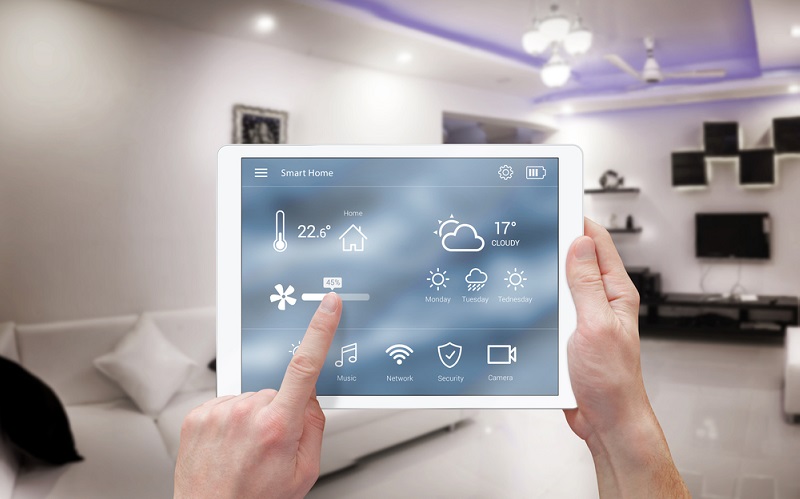Innovations in home appliances have changed our lives considerably. However, despite the recent advances in this area, such as the creation of smart appliances, this industry might not be as innovative as it should be. Even in the areas where it is progressing, the new products seem to be created with inherent faults. Considering all this, the future of home appliances seems murky.
Home Appliances That Changed and Those That Didn’t
Looking around in a modern electronics store one cannot help but feel like the future shown in sci-fi movies has arrived. The rise of the Internet of Things and smart tech is a huge step in that direction.
And today you can take a part of this future home with you in the form of smart appliances. You’ll be able to control your washing machine, refrigerator, and even your oven with the help of an app. These devices have changed drastically over the years, with modern models using better materials and more energy-efficient designs.
Induction cooktops, for example, are highly energy-efficient now, which helps the planet and cuts your monthly bills. They are also safer, especially for families with children, because the surface doesn’t get hot. The absence of heat protects you and your kids from burns and makes cleaning easier in case of a spill.
However, not all important home appliances have changed a great deal over time. For example, heaters and furnaces of today are more efficient and complicated, but not all that “smart” or different from what they were 20 or 30 years ago.
And the appliances that have changed didn’t necessarily become better. No doubt, smart devices are more convenient to use and they make your life easier. However, they aren’t nearly as long-lasting as their non-smart predecessors. Have you heard of a smart fridge serving over 20 years? Their life expectancy is 19 max, and the chances of the device serving that long aren’t good. On the other hand, many homes still have a Sub-Zero refrigerator dating back to the 1980s.
The answer to why both of these things are happening is simple: it’s beneficial for the manufacturers.
Innovation Vs. Appliance Manufacturers: What’s the Deal There?
As always in business, the reason for something happening or not happening is money. Usually, innovation brings more money, so it’s only natural that manufacturers will want to make their appliances more advanced and therefore more expensive, right?
This situation is a bit more complicated.
Innovation can speed up repairs, leaving many contractors with less work and reducing the sale of replacement parts. This might be the reason why your most important home appliances still don’t have the features of hi-tech modern smart cars, which can self-diagnose and determine the cause of the malfunction.
How many times have you wondered,“Why isn’t my furnace working?” You should be able to troubleshoot it yourself by now, and yet you still have to call in a contractor to fix it.
Imagine how much faster, cheaper, and easier the whole ordeal would be if your new furnace had a widget that informed you that it needs a replacement filter.
The same goes for common water heater issues and even your refrigerator. Regardless of how smart appliances become, this particular widget has yet to be incorporated.
Smart Today, Outdated Tomorrow
There is also another issue with the smart devices of today: innovations occur rapidly and as such, they become outdated just as quickly. And while firmware updates should solve this problem, those can be unreliable.
Simply put, manufacturers rarely provide updates, and even when they do the appliance doesn’t become as efficient as a new model. The result is that owners have to replace their refrigerators, washers, and microwaves as often as they do their smartphones. Otherwise, there is a high chance that they will stop working well with your smart home hub.
Don’t forget that infrequent updates also increase security risks. Smart home appliances are easy to hack by default, and they become even more vulnerable if not updated frequently.
Don’t forget the issue of parts as well. If you take a look at some high-quality refrigerators and washing machines that date back 20-30 years, you’ll see they are much sturdier than those we have now. Of course, they are also bulkier and heavier. However, there is a definite advantage to parts made of metal instead of plastic and bolted instead of glued. That advantage is durability.
The aforementioned Sub-Zero refrigerators, which function well today despite being 30+ years old, are proof of this.
In this case, innovation has certainly gone the wrong way. On one hand, it made appliances more affordable and lighter, as well as more compact. This makes it easier to fit these cool devices into sleek modern homes.
But at the same time, the average lifespan for these devices is barely 10 years. And considering the fact that their repairs can be costly, it’s often easier for the owner to replace the device instead of repairing it.
The good news is that you’ll be able to replace it with a better, smarter model… though you will likely replace it again in a few years.
To Upgrade or Not to Upgrade
Is this situation good or bad?
The answer depends on your point of view. On one hand, poorly-made appliances are a problem. Conversely, innovation keeps moving the industry forward and replacing them doesn’t have to be a detractor. In fact, replacement could keep you closer to the world’s tech progress.
And in regard to discarded appliances, recycling technology evolves as well and can be processed with a high level of efficiency. Japan, in particular, is making huge strides in this area, setting an example for the entire world.
The important thing is that the industry is developing and becoming more technologically sophisticated. Now, we just have to hope that manufacturers will start creating more durable products with truly useful built-in innovations.










